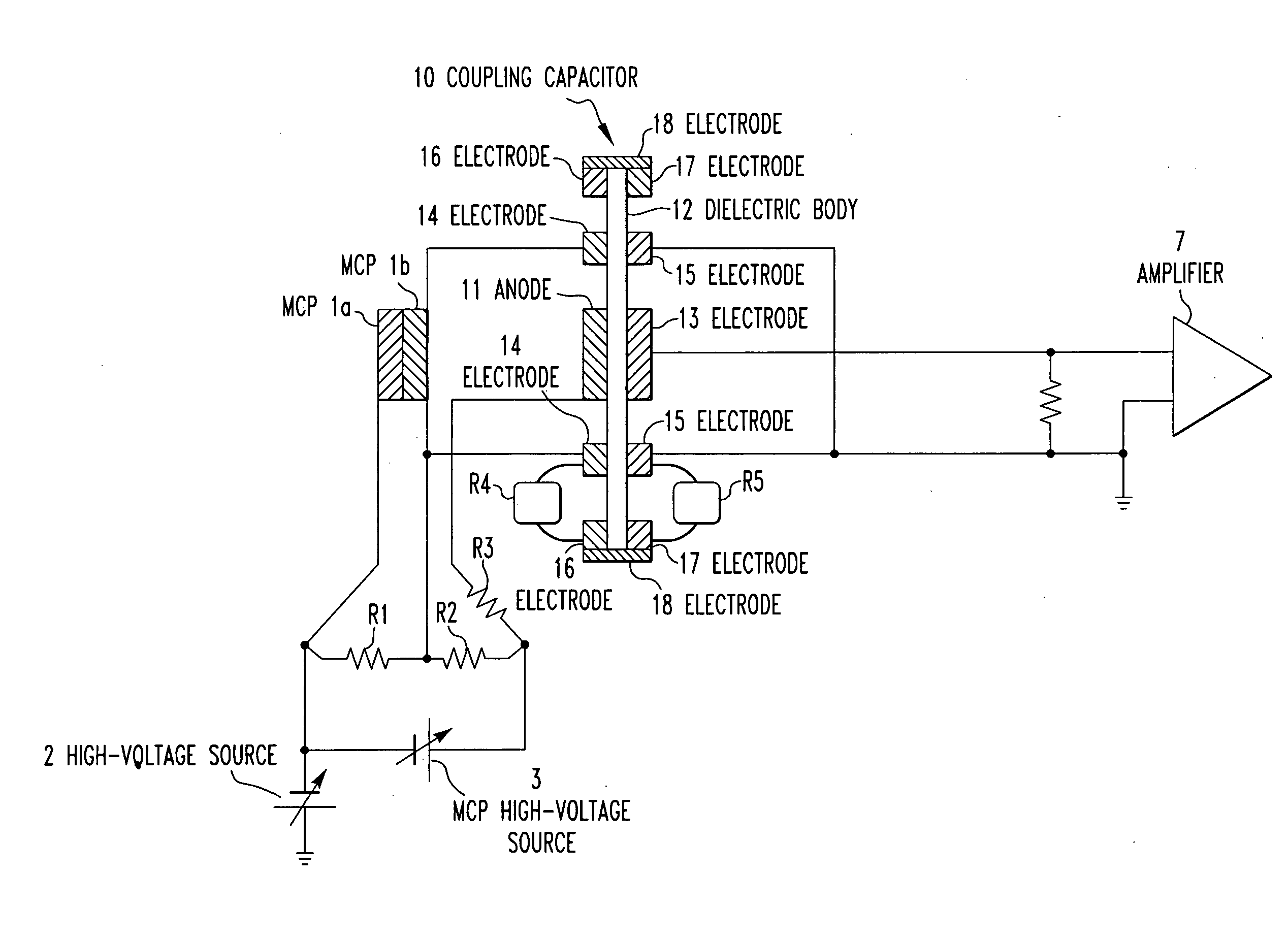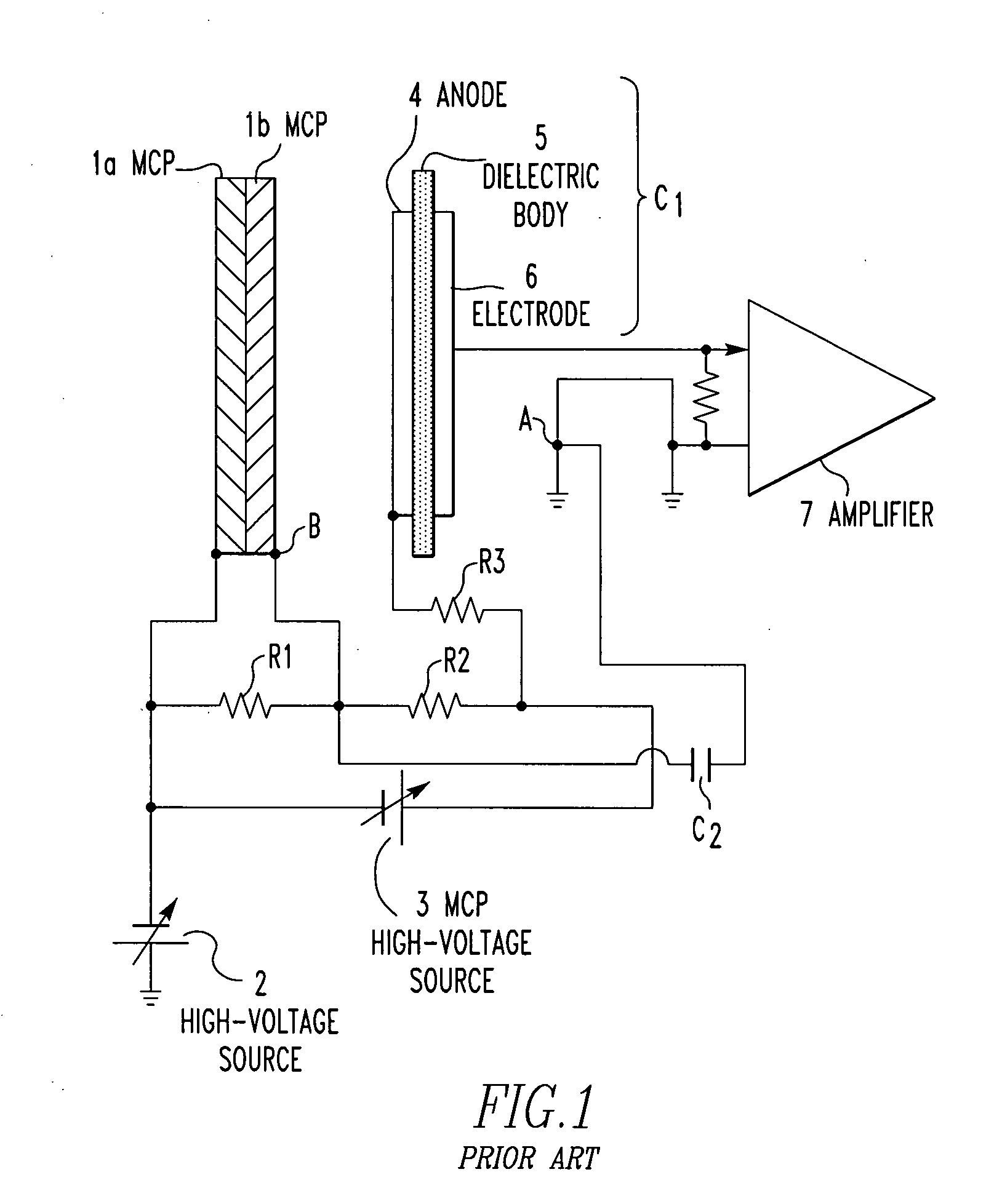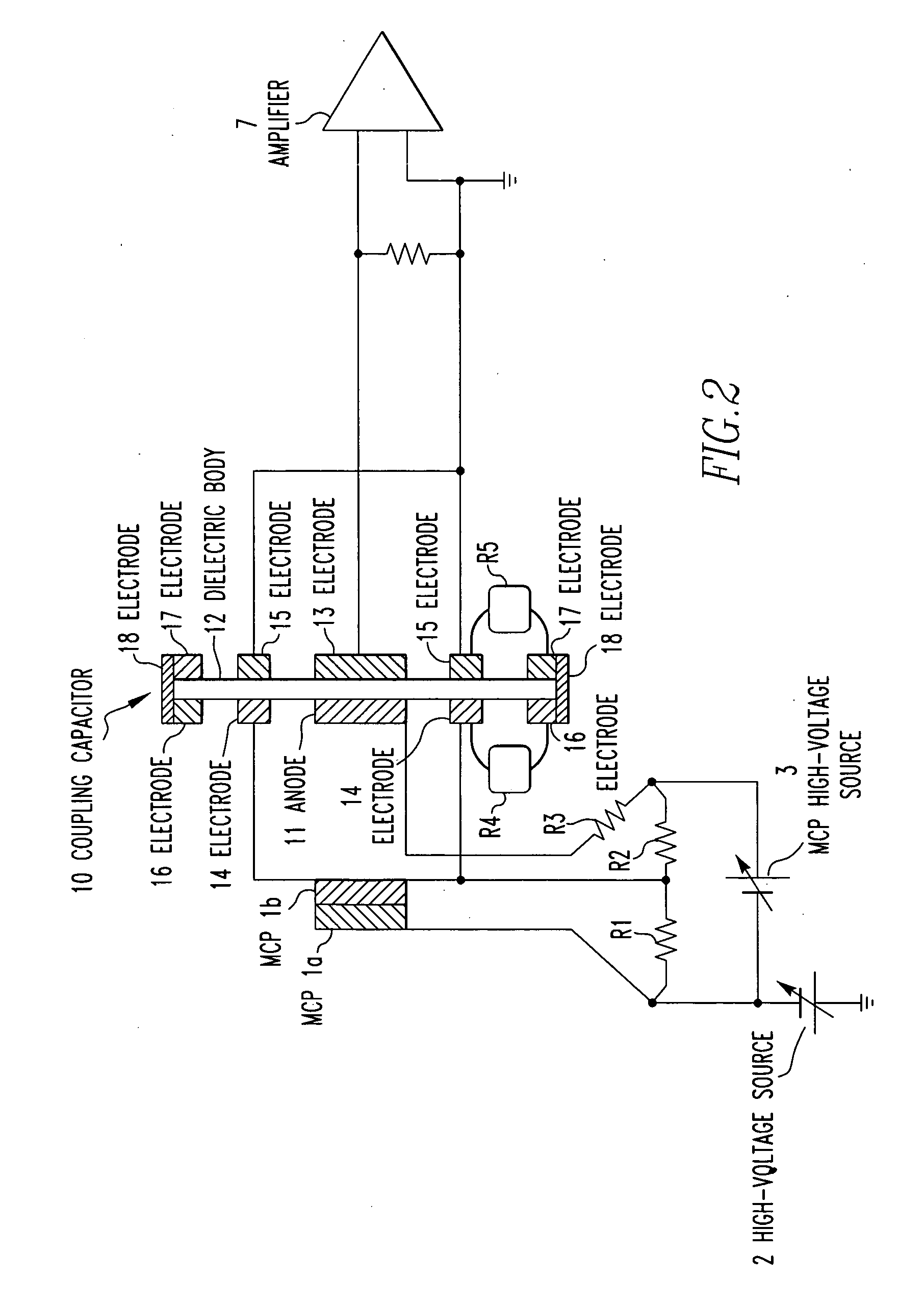Detector using microchannel plates and mass spectrometer
- Summary
- Abstract
- Description
- Claims
- Application Information
AI Technical Summary
Benefits of technology
Problems solved by technology
Method used
Image
Examples
Embodiment Construction
[0025] An embodiment of the present invention is hereinafter described in detail with reference to the drawings. FIG. 2 shows the whole detector including a detector circuit according to the present invention. It is to be noted that like components are indicated by like reference numerals in both FIGS. 1 and 2. In FIG. 2, two microchannel plates (MCPs) 1a and lb are stacked on top of each other in use. A high voltage of −7 kV, for example, is applied from an ion acceleration high-voltage source 2 to the ion incident surface of the MCP 1a.
[0026] Furthermore, a high voltage (e.g., about 2 kV) is applied between the ion incident surface of the MCP assembly consisting of the two superimposed MCPs 1a and 1b and the exit surface from which multiplied electrodes exit from an MCP high-voltage source 3 via a voltage-dividing resistor R1. The voltage source 3 produces a high voltage (e.g., 2.1 kV). As a result, the emissive surface of the MCP 1b is at a potential of −5 kV. In addition, a pot...
PUM
 Login to View More
Login to View More Abstract
Description
Claims
Application Information
 Login to View More
Login to View More - R&D
- Intellectual Property
- Life Sciences
- Materials
- Tech Scout
- Unparalleled Data Quality
- Higher Quality Content
- 60% Fewer Hallucinations
Browse by: Latest US Patents, China's latest patents, Technical Efficacy Thesaurus, Application Domain, Technology Topic, Popular Technical Reports.
© 2025 PatSnap. All rights reserved.Legal|Privacy policy|Modern Slavery Act Transparency Statement|Sitemap|About US| Contact US: help@patsnap.com



